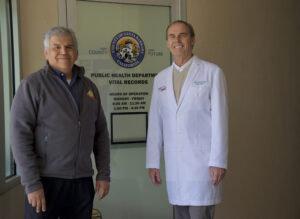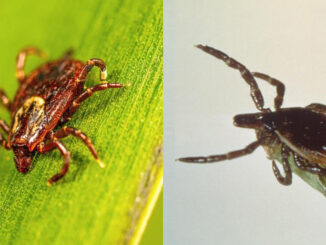
Santa Barbara County’s public health and vector control experts join forces to monitor and prevent the spread of diseases from mosquitoes, ticks, and other vectors
by Elizabeth Ann Morabito
Mosquitoes and other disease-carrying vectors have been around since the Jurassic period, threatening human health for centuries. In fact, mosquitoes have historically caused more human suffering than any other organism—and they continue to do so. Today, the risks they pose are evolving faster than ever.
West Nile Virus, Lyme disease, and even the plague are all vector-borne illnesses that could threaten Santa Barbara County residents. But thanks to the combined efforts of the Mosquito & Vector Management District of Santa Barbara County (MVMD) and the Santa Barbara County Department of Public Health (DPH), those threats remain in check.
“We rely on the MVMD to monitor for mosquito and tick presence, track potential infections, and carry out eradication efforts,” said Dr. Henning Ansorg, public health officer for Santa Barbara County.
Our mission is to control mosquitoes and other vectors that pose a public health threat. Mosquitoes can transmit a number of viruses, and right now, the one we’re most focused on is West Nile Virus.
Brian Cabrera, general manager at MVMD
While Santa Barbara County has reported a few mosquito-borne illness cases in recent years, Dr. Ansorg confirms that each case has been linked to travel—not local transmission. Outbreaks in other parts of California, however, tell a different story. In 2024 alone, 129 people were infected with West Nile Virus statewide—12 of them fatally, due to complications like encephalitis or meningitis. A few horses and hundreds of birds and chickens were also affected.
“Our mission is to control mosquitoes and other vectors that pose a public health threat,” explains Brian Cabrera, general manager of MVMD. “Mosquitoes can transmit a number of viruses, and right now, the one we’re most focused on is West Nile Virus.”
While MVMD leads surveillance and control of vectors, DPH handles human disease monitoring and public health response. MVMD’s data plays a key role in helping the County detect early signs of potential outbreaks—and determine whether further steps, like investigations or quarantine measures, might be necessary.

Barbara County, praises MVMD’s mosquito and
vector management efforts led by Brian Cabrera
Photo credit Nell Campbell
For example, in 2020, a Santa Barbara resident discovered the invasive mosquito species Aedes aegypti on his property. MVMD responded immediately: technicians inspected yards for standing water and treated breeding sites, set traps, and distributed flyers to help residents identify breeding grounds and prevent further spread.
Meanwhile, DPH stayed on high alert—tracking for signs of illness, coordinating with healthcare providers, and offering public guidance to keep residents safe.
Unlike many California counties where Aedes aegypti has become permanently established, this species was successfully eliminated in Santa Barbara County before it could take hold. This success shows how inter-agency coordination and rapid response can stop invasive species in their tracks.
As climate patterns continue to shift, the work of both agencies becomes even more important.
“Mosquitoes are a warm weather insect,” Cabrera explains. “If the climate gets warmer and if our winters become milder, then our peak mosquito season will stretch out over a larger part of the year.”
Climate change doesn’t just extend mosquito seasons—it intensifies them. Drought conditions push mosquitoes into smaller, stagnant water sources, increasing their density in urban areas. On the flip side, heavy rains create ideal breeding sites through water accumulation.
This combination of warmer weather and more breeding locations could increase the risk of mosquito-borne disease in the future. But thanks to MVMD’s year-round surveillance and proactive control measures—and its close partnership with DPH—Santa Barbara County has a lower mosquito-borne disease risk than many other regions in the state.
Ultimately, stopping the spread of vector-borne disease isn’t just the job of public health agencies—it requires community vigilance.
By dumping standing water, reporting concerns, and staying informed, residents can make a major impact.
“Mosquito-borne diseases don’t wait until we’re ready,” Cabrera said. “That’s why we have to stay ahead of them.”
That means MVMD, DPH, and the community must always stay alert.
How you can help keep Santa Barbara County safe:
- Spot unusual mosquito activity? Especially daytime ankle biters? It could be invasive Aedes aegypti—report immediately: mvmdistrict.org/contact-us or call (805) 969-5050.
- See standing water or a neglected pool? Let MVMD know: mvmdistrict.org/contact-us or call (805) 969-5050.
- Found a dead bird? It may be linked to West Nile Virus. Report it to the California Department of Public Health: westnile.ca.gov/report.



